#hickory tiger moth
Photo


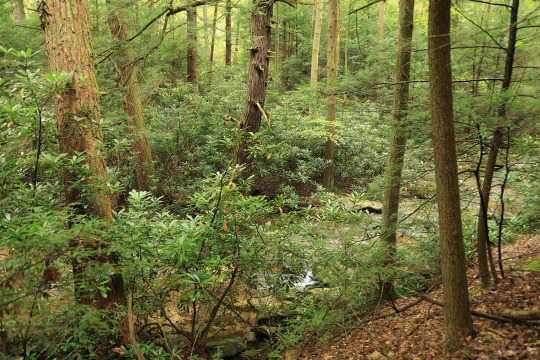

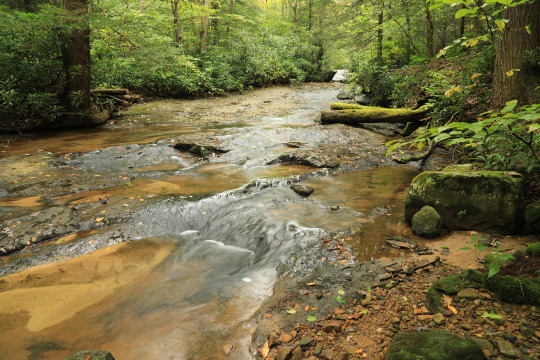
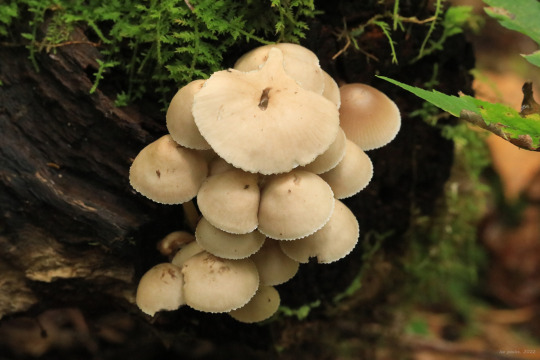


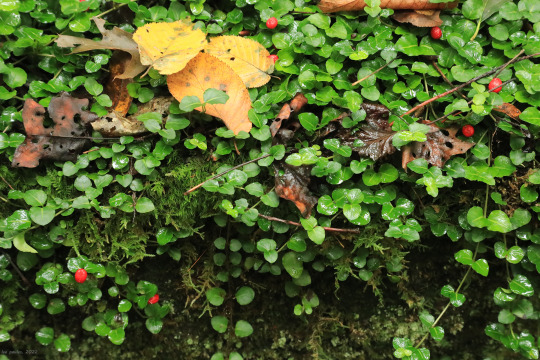
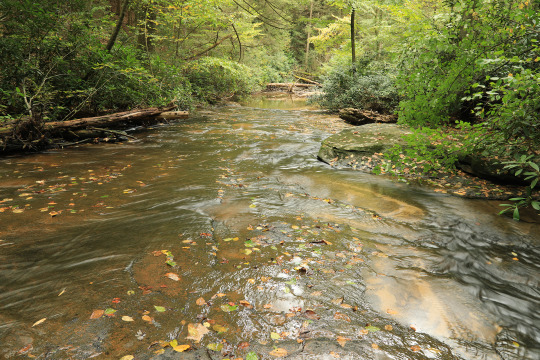
Walk with me: an early October stroll through the virgin hemlock forest along Little Laurel Run in Coopers Rock State Forest. The older I get the more I find myself drawn to animism. It’s so easy to walk in an old forest like this and imagine that everything in it - rocks, trees, moss - has been gifted with a sentient awareness. Not by some hateful, spiteful god, but by the grace of nature in her infinite wisdom.
#appalachia#vandalia#west virginia#coopers rock state forest#little laurel run#virgin hemlock trail#virgin hemlock forest#tsuga canadensis#eastern hemlock#canadian hemlock#lophocampa caryae#hickory tussock moth#hickory tiger moth#eurybia macrophylla#big-leaved aster#bigleaf aster#large-leaved aster#mitchella repens#partridgeberry#partridge berry#autumn#fall#wildflowers#flora#berries#fungi
264 notes
·
View notes
Text
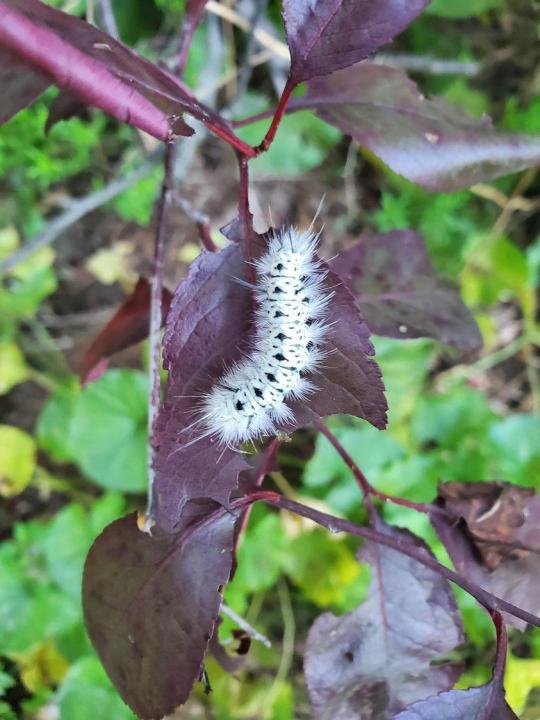
Hickory Tiger Moth Caterpillar aka Hickory Tussock Moth
Found this cutie today!
These fuzzy, white and black caterpillars are commonly found in the autumn season, primarily located in North America.
The adult moths are a tan to a light brown and have rows of cream colored spots on top of their wings. They fly from May-June and lay their eggs on the underside of leaves. Usually resulting in 100 or more!
The young larvae then hatchery anywhere from July-September, and will start to feed on the nearby leaves. Once they grow older, they tend to feed is smaller groups or even by themselves! The mature white fuzzy caterpillars that we encounter, have left the host plant in search of a place to spin their cocoon.
Now, they may be very pretty but you do not want to touch! The hickory tiger caterpillar used it's dainty hairs for defense. The hairs are barbed and can easily detach becoming embedded in the skin. When they spin their cocoon, they also incorporate these hairs into it, so it can be protected! The result of of touching these hairs will cause an itchy rash, sometimes an allergic reaction.
Below is a picture of the moth 🙂 (not my photo) so pretty huh??

#moth#glooms nature facts#caterpillar#moths#nature#mother nature#nature is beautiful#hickory tiger moth#hickory tussock moth#moths are cute#butterfly#insects#bugs#flying insects#worms#fuzzy#white#nature facts
5 notes
·
View notes
Text
I Got bored one time awhile ago and made a list of every prefix plus some into organised sections so I thought I might as well share.
All the ones that aren’t cannon to warriors, yet at lest are bold
Describing names
Colours: red, russet, copper, golden, amber, yellow, green, blue, violet, pink, white, gray, black, ebony, dark, pale, silver, brown, tawny, fallow
Pattern, Texture + Size: spot/ted, dapple, speckle, freckle, brindle, patch, mottle, ragged, tangle, kink, bristle, fuzzy, curl/y, wooly, soft, sleek, little, tiny, small, slight, short, tall, long, big, heavy, crooked, broken, half, stumpy, shred, torn, jagged
Actions + Character: flip, pounce, bounce, jump, hop, crouch, down, low, drift, flail, strike, running, fidget, mumble, whistle, snap, sneeze, shiver/ing, shining, flutter, fallen, lost, rush, fleet, quick, shy, sweet, brave, loud, quiet, wild, hope, wish,
Other: claw, whisker, dead, odd, one, spike, fringe, echo, song, hallow, haven
Elements
Time + Weather: day, night, dusk, dawn, morning, sky, sun/ny, moon, storm, lightning, thunder, cloud/y, mist/y, fog, snow, blizzard, ice, frost, dew, drizzle, rain, clear, wind, breeze, gale, shadow, shade, bright, light,
Earth/Water/Fire names: stone, rock, boulder, slate, flint, pebble, gravel, sand/y, dust, mud/dy, meadow, hill, rubble, river, ripple, whorl, float, rapid, shimmer, lake, swamp, marsh, wave, wet, bubbling, splash, puddle, pool, creek, fire, flame, flicker, flash, blaze, scorch, ember, spark, ash, soot, cinder, smoke
Plants
Trees: alder, aspen, birch, beech, cedar, cypress, pine, elm, willow, oak, larch, maple, bay, rowan, timber, bark, log, wood, twig, acorn, cone, seed, spire
Berry/Nut/Fruit/Herb: juniper, elder, sloe, holly, yew, mistle, bramble, hickory, hazel, chestnut, nut, apple, cherry, cranberry, olive, pear, plum, peach, chive, mint, fennel, sage, basil, mallow, parsley
Flowers: aster, poppy, primrose, rose, bluebell, marigold, tansy, pansy, briar, cherry, daisy, dandelion, daffodil, tulip, violet, lily, myrtle, thrift, yarrow, heather, lavender, blossom, bloom, flower, petal
Other: leaf, frond, fern, bracken, sorrel, hay, rye, oat, wheat, cotton, reed, pod, cinnamon, milkweed, grass, clover, weed, stem, sedge, gorse, furze, flax, nettle, thistle, ivy, moss, lichen, bush, vine, root, thorn, prickle, nectar
Animals
Mammals: mouse, rat, mole, vole, shrew, squirrel, hedgehog, bat, rabbit, hare, ferret, weasel, stoat, mink, marten, otter, hog, wolf, hound, fox, vixen, badger, deer, doe, stag, fawn, sheep, cow, pig, lion, tiger, leopard, lynx, milk
Birds: robin, jay, cardinal, thrush, sparrow, swallow, shrike, starling, rook, swift, dove, pigeon, crow, raven, duck, goose, heron, wren, finch, swan, stork, quail, gull, lark, owl, eagle, hawk, kestrel, buzzard, kite, hoot, feather, bird, egg, talon
Fish, Reptiles + Amphibians: pike, perch, pollack, trout, tench, cod, carp, bass, bream, eel, minnow, fin, snake, adder, lizard, turtle, frog, toad, newt
Bug type Names: bug, lady or ladybug, moth, spider, ant, snail, slug, beetle, bee, wasp, dragon or dragonfly, bumble, worm, maggot, cricket, fly, midge, web, honey
Skyclan + Warriorclan: Bella, Billy, Big, Harry, Harvey, Snook, Ebony, Monkey
71 notes
·
View notes
Note
Hi! I'm about to get started on a mothman-themed flash sheet, and I was wondering if you had any requests for cool moths to hybridize him with? Ideally North American species. Your followers are welcome to chime in too, of course!
BOY DO I.
I think a rosy maple mothman would be VERY popular. A regal moth would be very cool, too, especially if you worked in aspects of their caterpillar, the hickory horned devil!
Other cool and/or colorful favs:
-io moth
-sagebrush sheep moth
-Lebeau's silk moth
-virgin tiger moth
-gaudy sphinx
-giant leopard moth
-princely tiger moth
-Anaxita decorata (no common name)
-southern flannel moth (fuzzy!!!)
I'll stop I could go on all day
Note: PLEASE share when you're done I'd love to see even if you don't use any of these suggestions :)
95 notes
·
View notes
Note
assign an insect to each of your OCs!
Third time trying to answer this because Tumblr won't stop freezing! Anyway here we go...
Akani: Frog-legged Leaf Beetle

Kiomi: Bumble Bee

Ruhara: Hickory Tussock Caterpillar

Arline Lanes: Brown Mantidfly
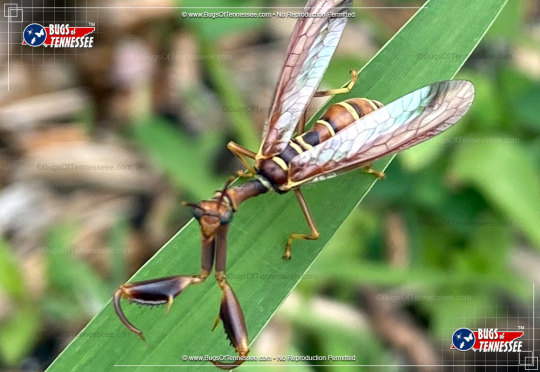
Fox: Baltimore Checkerspot
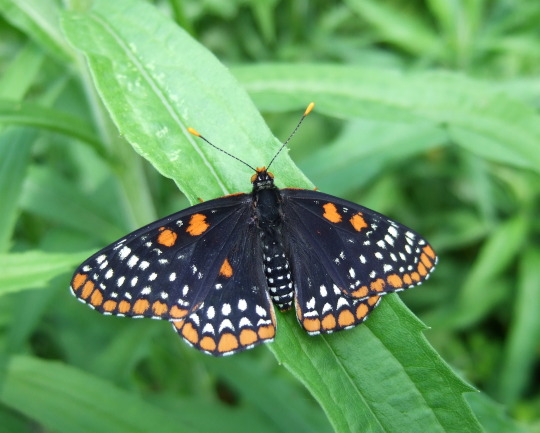
Beatrice Maddison: Black and Red Blister Beetle

Dannie Karim: Northern Walkingstick

Stick bugs!!
Ryn Halvorsen: Eastern-tailed Blue Butterfly
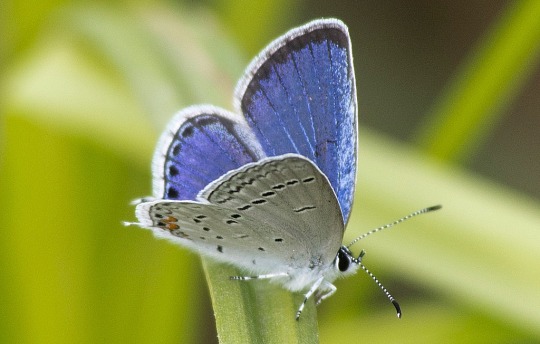
Silas Petersson: Bumelia Borer Beetle
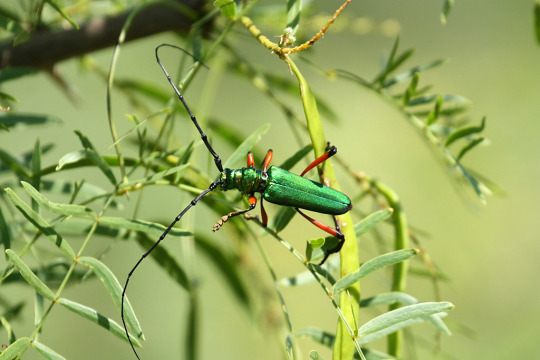
Pigeon: Pigeon Tremex
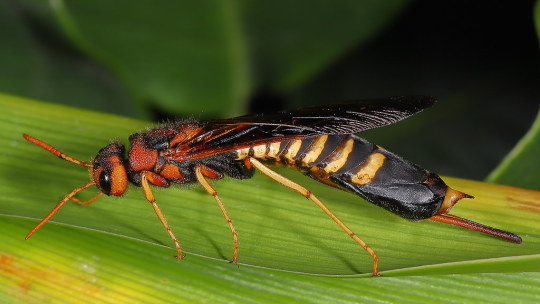
Arith: Two-spotted Forester Moth
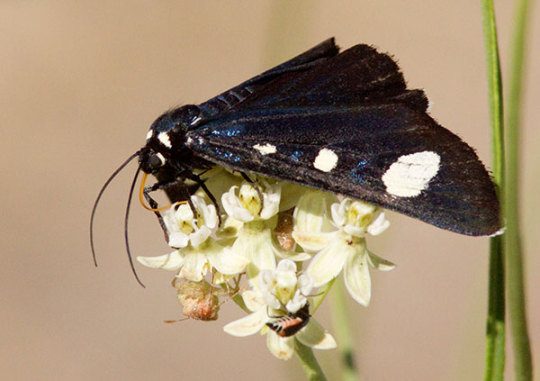
Iriel: Gold Moth

Kaia: White-striped Black Moth
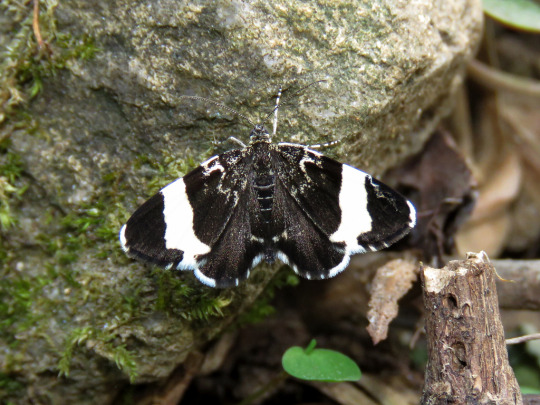
Odel: Volupial Mint Moth

Eliška Hasek: Fire-colored Beetle

Marigold Rosales: Golden Northern Bumble Bee

Rosie Rosales-Maximoff: Rose Hooktip Moth
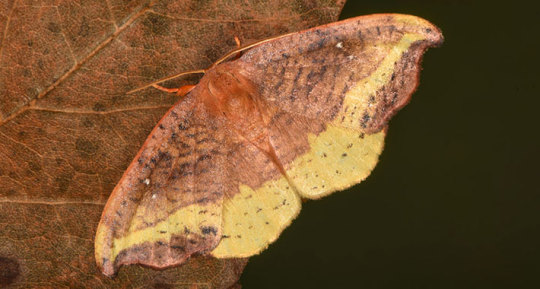
Allison Dahir: Soft-winged Flower Beetle

Lee Quinn: Big Poplar Sphinx

Jelaa Latka: Australian Tiger Beetle

Van Kahl: Giant Thorny Cricket because I love their goofy little faces

#answered asks#pringle answers#practically an xman#insects#bugs#bugs tw#insect tw#fursonas#akani#kiomi#ruhara#arline the arcane oc#arline lanes#oc: fox#carina shepherd // beatrice maddison#dannie karim#ryn halvorsen#silas petersson#nameless ghoul pigeon#pringles good omens ocs#eliška hasek#xmen oc au#lee quinn#jelaa latka#van kahl
7 notes
·
View notes
Note
colorgenders inspired by the results of a “What is your Aura” quiz ((https://)uquiz(.)com/quiz/pxTx2D/what-color-is-your-aura):
Sky: short poems, teacups, clear skies, diaries, dripping icicles, tears, tennis shoes.
Honeysuckle: succulents, key lime, glow-in-the-dark stars, blown glass, honeydew, garter snakes, notes in bottles.
Seafoam: clear water, milkshakes, crystals, agave, candy dishes, converse, seashells.
Yellow: daisies, road signs, bumblebees, lemon meringue, bicycles, polaroids, awnings.
Hickory: felled oak, brass, sunken ships, olive pits, graphic shirts, splinters, dark room.
Orange: guitars, fanta bottles, sunglasses, orange peels, butterflies, popsicles, paper lanterns.
Sage: herb clippings, matcha, bullet journals, mini backpacks, needle felts, pistachio, laptop stickers.
Teal: dyed hair, scales, doc martens, aurora borealis, stormy seas, kingfishers, agate.
Royal (blue): crown jewels, portraits, satin chairs, masquerades, nebulas, betta fish, secrets.
Gold: lion statues, coins, gold leafing, bound books, goldfinches, crowns, heart lockets.
Crimson: rose vines, blood, apples, velvet, sharp nails, galaxies, dripping jewellery.
Navy: brush strokes, suit jackets, midnight, comforters, star gazing, arctic waters, starlings.
Forest: fern leaves, greenhouses, cloaks, bookstores, pine trees, chokers, snake scales.
honey: friendship bracelets, beehives, school buses, children's books, flower petals, honeyed toast, polaroids.
Ashen: old newspapers, smoke, quiet cities, pale cheeks, pebbles, chalk, the clouded moon.
Garnet: Brooches, anthologies, stained glass, leaves, dining chairs, long robes, curtains.
Chiffon: stone walls, sweaters, moths, dusty lace, animal tracks, incense, throw pillows.
Red: leather jackets, cherries, bruised knuckles, roses, lipstick, fast cars, rose petals.
Magenta: splattered paint, glitter, childhood friends, neon, pleather, dance floors, crystals.
Amaranth: bundled flowers, ribbon, merlot, overcoats, gemstones, lipstick prints, red velvet.
Periwinkle: knit hats, candies, tiny flowers, beads, teacups, washi tape, clouds.
Jade: islands, sketchbooks, rainy windows, pendants, puzzle pieces, tree frogs, sea glass.
Pink: cupcakes, sunglasses, pink sands, starbursts, pinky promises, flower crowns, ice cream.
Rose: lace, blown kisses, milk tea, paper fans, pillows, ballet slippers, fairy wings.
Amethyst: earrings, violet corts, parades, gemstones, insect wings, grape bushels, outer space.
Noir: drops of ink, eyeliner, crows, spiders, charcoal, painted nails, the night.
Cream: dandelions, marble, bottled coffee, hair ties, banana cream, bedsheets, sketches.
Beige: lattes, dry fields, footprints, easels, cat fur, pottery, fresh-baked cookies.
Pearl: abalone, perfume bottles, chandeliers, tulle, ball jointed dolls, satin, paint palettes.
Bronze: leather books, cowboy hats, foxes, candle jars, sword hilts, cobblestone streets, hourglasses
Amber: autumn days, freckles, torches, cabins, fossils, unbrushed hair, enamel pins.
Fire: sunrises, woven blankets, campfires, tigers, whiskey, monarchs, road trips.
Purple: geodes, club lights, ferris wheels, sunglasses, hummingbirds, eyeshadow, outer space.
Blush: lollipops, warm cheeks, lip gloss, flowers, flamingo feathers, painted nails, heart glasses.
finally done with all of these — they're queued!
6 notes
·
View notes
Text
Moth bitty: Swapfell Gaster
SwapFell Gaster Moth
Name: Hikor
Species: hickory tiger moth(Lophocampa caryae)
Size: 4 - 5 inches tall
Personality: Greedy, bossy, energetic, protective,
Likes: Being around other moth bitties, dust baths, being around any other bitty,
Dislikes: Being wet, having their wings touched, being alone, being bored, being inside to long,
Compatibility: These bitties like Bell Tigers can be greedy for money often times hoarding it! Though, they also like helping their owner keep track of money and helping with their spending, and while some owners might think they just want to help them, but in reality they want to help their son types(Bonias and Bell Tigers)!
They can be a little lazy and only want to hoard money when there isnt a Bonia/Bell Tiger around,
They often bond with a Bonia and a Bell Tiger at the center! And after that they refuse to be adopted without them! Though this is more like a 50/50 than a 95/5 with Bonia and Bell Tiger's pairing,
These bitties often times give good financial advice and help you limit unneeded purchases!
Additional info: Moth bitties are strictly nocturnal and have trouble getting around and staying awake during the day!
They also use the moon and stars to know where they are so bright lights can confuse them! It is best to watch them when outside!
Zone: Flowerfield, Apiary, Fairy Forest,
In Universe: They are seen as good at helping with money, but not everyone wants to adopt the full 'set' when they're bonded,
Difficulty: Basic - Intermediate
1 note
·
View note
Text
ATTENTION FAIRY FOLKS!!!
I have a poll for you:
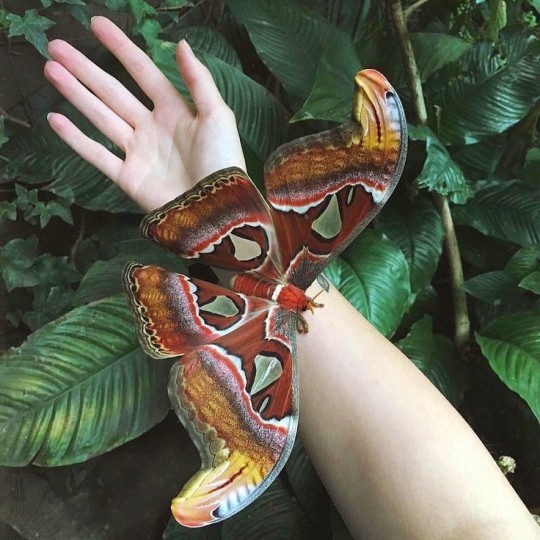
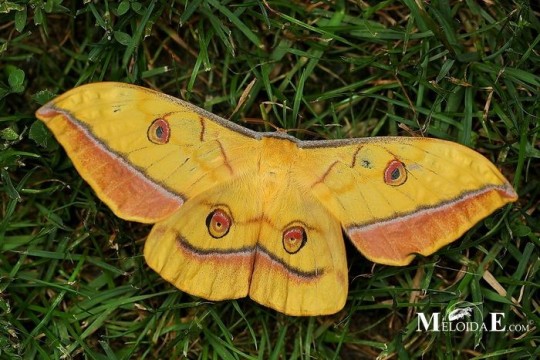
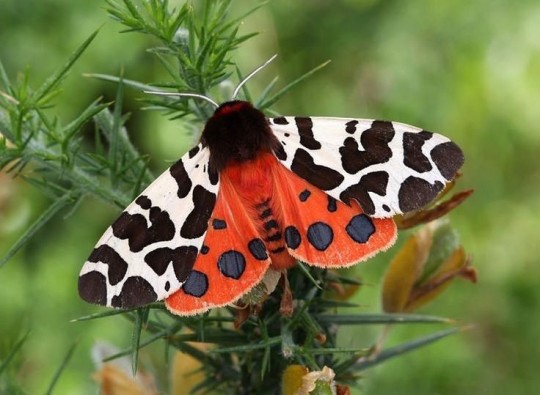


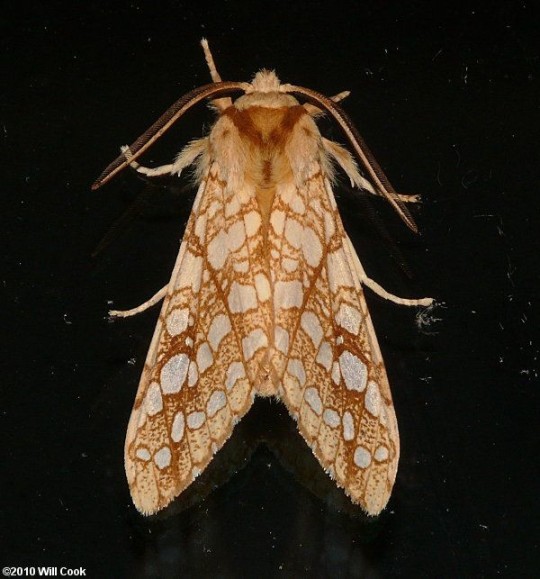
I will also make more Fairy Pills with other types of insect wings if you wanna answer those too :^]
#fairy#fairy aesthetic#fairy wings#fae#fae folk#fairy folk#poll#fairy wings poll#fairy poll#personality poll#aesthetic#aesthetic poll#what fairy are you#magic#magical#folk magic#folklore#mythical creatures#insects#moths#moth wings
1 note
·
View note
Text
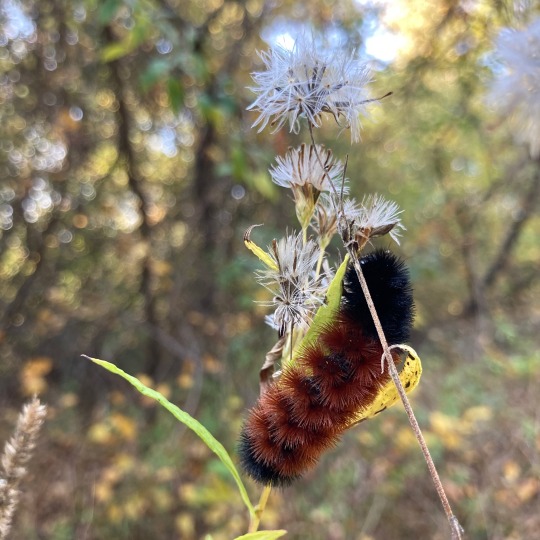
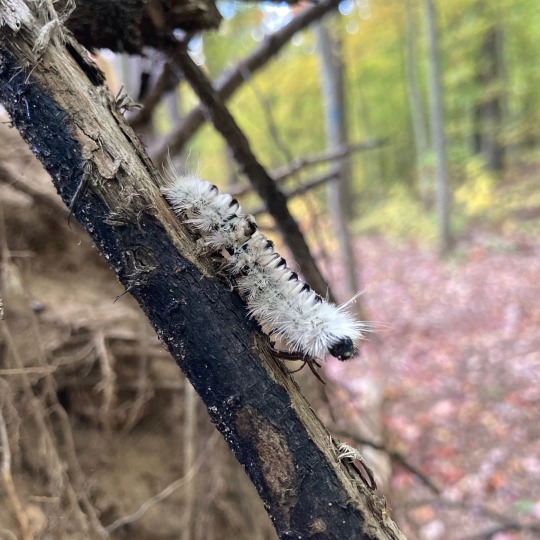
Isabella Tiger Moth and Hickory Tussock Moth caterpillars in Ott Biological Preserve, Michigan.
#nature#nature photography#original photography#puremichigan#photographers of tumblr#lensblr#michigan photography#caterpillars#moths#amateur photography#hickory tussock moth#tussock moth#isabella tiger moth#tiger moth#entomology#mine#fleetingfutures#onenicebugperday#insects#bugs
9 notes
·
View notes
Photo
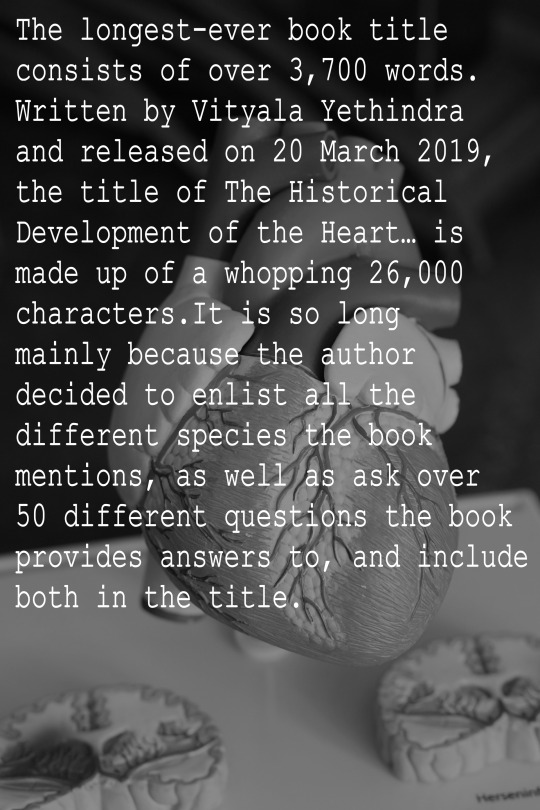
The full book title contains 3777 words and reads as follows: 'The historical development of the Heart i.e. from its formation from Annelida: Clam worm, Seamouse, Lugworm, Megascolex, Tubifex, Pheretima, Freshwater leech, marine leech, land leech. Arthropoda: Ladybird, Krill, Rock Barnacle, Root-headed Barnacle, Copepod, Silverfish, Cairns birdwing, Silver - spotted skipper, Scutigera, Cray fish, Large white, Andonis blue, Camberwell beauty, Tiger swallowtail, Regent skipper, Black – veined white, Green – underside blue, Blue Morpho, Apollo, Guava skipper, Cleopatra, Large copper, Millipede, Orb spider, Black widow spider, Giant crab spider, Wolf spider, Bird – eating spider, Tenebrionid beetle, Green Tiger beetle, African goliath beetle, Scolopendra, Diving beetle, African ground beetle, New guinea weevil, Barnacle, Lobster, Shrimp, Woodlice, Mite, Prawn, Housefly, Butterfly, Monarch butterfly, Peacock butterfly, Honey bee, Fairy shrimp, Horsehoe crab, Tick, Bluebootle, Froghopper, Yellow crazy ant, Water flea, Sea spider, Fiddler crab, Shiny spider crab, Hermit crab, Sail swallowtail, Red admiral, Morpho butterfly, Desert locust, Stephens island weta, Speckled bush cricket, Mole cricket, Dung – beetle, Euthalia ynipardus, Small blues, Termite, Hornet, Mosquito, Garden spider, Tarantula, Desert hairy scorpion, Emperor dragon – fly, Moth, Centipede, Wood ant, Stag beetle, Indian red admiral, Blue admiral, Harvestman, Hoverfly, Shield bug, Assassin bug, Cicada, Coreid bug, Rose aphid, Water – boatman, Wasp, June bug, Large tortoiseshell, Frog beetle, Mexican red – legged tarantula, Paintedlady, Sydney funnelweb spider, Small tortoiseshell, Mountain bumble bee, Trapdoor spider, Jumping spider, Daddy longlegs spider, Orchind bee, Asian carpenter bee, Parasitic bee, House spider, Giant longhorn beetle, Flea, Bedbug Beetle, Cockroach, Scorpion, Spider, Ant, Gnats, Grasshopper, Silver fish, Crab, Great green bush cricket, Elephant hawk – moth. Mollusca: Neomenia, Chaetoderma, Chiton, Lepidopleurus, Apple snail, Sea hare, Sea lemon, Dentalium, Freshwater mussel, Marine mussel, Pearl oyster, Cuttlefish, Giant squid, Chambered fish, Devilfish. Fishes or Pisces: African glass catfish, African lungfish, Aholehole, Airbreathing catfish, Alaska blackfish, Albacore, Alewife, Alfonsino, Algae eater, Alligatorfish, Alligator gar, Amberjack - Seriola dumerili, American sole, Amur pike, Anchovy, Anemonefish, Angelfish, Angler, Angler catfish, Anglerfish, Antarctic cod, Antarctic icefish, Antenna codlet, Arapaima, Archerfish, Arctic char, Armored gurnard, Armored searobin, Armorhead, Armorhead catfish, Armoured catfish, Arowana, Arrowtooth eel, Asian carps, Asiatic glassfish, Atka mackerel, Atlantic Bonito (Sarda sarda), Atlantic cod, Atlantic herring, Atlantic salmon, Atlantic Sharpnose Shark - Rhizoprioltodon terraenovae, Atlantic saury, Atlantic silverside, Australasian salmon, Australian grayling, Australian herring, Australian lungfish, Australian prowfish, Ayu, Baikal oilfish, Bala shark, Ballan wrasse, Bamboo shark, Banded killifish, Bandfish, Banjo, Bangus, Banjo catfish, Bank Sea Bass, Barb, Barbel, Barbeled dragonfish, Barbeled houndshark, Barbel-less catfish, Barfish, Barracuda, Barracudina, Barramundi, Barred danio, Barreleye, Basking shark, Bass, Basslet, Batfish, Bat ray, Beachsalmon, Beaked salmon, Beaked sandfish, Beardfish, Beluga sturgeon, Bengal danio, Betta, Bichir, Bicolor goat fish, Bigeye, , Bighead carp, Bigmouth buffalo, Bigscale, Billfish, Bitterling, Black angelfish, Black bass, Black dragonfish, Blackchin, Blackfin Tuna - Thunnus atlanticus, Blackfish, Black neon tetra, Blacktip reef shark, Black mackerel, Black scalyfin, Black sea bass, Black scabbardfish, Black swallower, Black tetra, Black triggerfish, Bank Sea Bass aka Yellow Sea Bass - Centropristis ocyurus, Bleak, Blenny, Blind goby, Blind shark, Blobfish, Blueline Tilefish, Blowfish, Blue catfish, Blue danio, Blue-redstripe danio, Blueline Tilefish , Blue eye, Bluefin tuna, Bluefish, Bluegill, Blue gourami, Blue shark, Blue triggerfish, Blue whiting, Bluntnose knifefish, Bluntnose minnow, Boafish, Boarfish, Bobtail snipe eel, Bocaccio, Boga, Bombay duck, Bonefish, Bonito, Bonnetmouth, Bonytail chub, Bronze corydoras, Bonytongue, Bowfin, Boxfish, Bramble shark, Bream, Brill, Bristlemouth, Bristlenose catfish, Broadband dogfish, Brook lamprey, Brook trout, Brotula, Brown trout, Buffalo fish, Bullhead, Bullhead shark, Bull shark, Bull trout, Burbot, Bumblebee goby, Buri, Burma danio, Burrowing goby, Butterfish, Butterfly ray, Butterflyfish, California flyingfish, California halibut, Canary rockfish, Candiru, Candlefish, Capelin, Cardinalfish, Cardinal tetra, Carp, Carpetshark, Carpsucker, Catalufa, Catfish, Catla, Cat shark, Cavefish, Celebes rainbowfish, Central mudminnow, Chain pickerel, Channel bass, Channel catfish, Char, Cherry salmon, Chimaera, Chinook salmon, Cherubfish, Chub, Chubsucker, Chum salmon, Cichlid, Cisco, Climbing catfish, Climbing gourami, Climbing perch, Clingfish, Clownfish, Clown loach, Clown triggerfish, Cobbler, Cobia, Cod, Codlet, Codling, Coelacanth, Coffinfish, Coho salmon, Coley, Collared carpetshark, Collared dogfish, Colorado squawfish, Combfish, Combtail gourami, Common carp, Common tunny, Conger eel, Convict blenny, Convict cichlid, Cookie-cutter shark, Coolie loach, Cornetfish, Cowfish, Cownose ray, Cow shark, Crappie, Creek chub, Crestfish, Crevice kelpfish, Croaker, Crocodile icefish, Crocodile shark, Crucian carp, Cuckoo wrasse, Cusk, Cusk-eel, Cutlassfish, Cutthroat eel, Cutthroat trout, Dab, Dace, Desert pupfish, Devario, Devil ray, Dhufish, Discus, Diver: New Zealand sand diver or long-finned sand diver, Dogfish, Dogfish shark, Dogteeth tetra, Dojo loach, Dolly Varden trout, Dolphin fish - Corypaena hippurus, Dorab, Dorado, Dory, Dottyback, Dragonet, Dragonfish, Dragon goby, Driftfish, Driftwood catfish, Drum, Duckbill, Duckbill eel, Dusky grouper, Dusky Shark - Carcharhinus obscurus, Dwarf gourami, Dwarf loach, Eagle ray, Earthworm eel, Eel, Eel cod, Eel-goby, Eelpout, Eeltail catfish, Elasmobranch, Electric catfish, Electric eel, Electric knifefish, Electric ray, Elephant fish, Elephantnose fish, Elver, Ember parrotfish, Emerald catfish, Emperor angelfish, Emperor bream, Escolar, Eucla cod, Eulachon, European chub, European eel, European flounder, European minnow, European perch, False brotula, False cat shark, False moray, Fangtooth, Fathead sculpin, Featherback, Fierasfer, Fire goby, Filefish, Finback cat shark, Fingerfish, Firefish, Flabby whale fish, Flagblenny, Flagfin, Flagfish, Flagtail, Flashlight fish, Flatfish, Flathead, Flathead catfish, Flier, Flounder, Flying gurnard, Flying fish, Footballfish, Forehead brooder, Four-eyed fish, French angelfish, Freshwater eel, Freshwater hatchetfish, Freshwater shark, Frigate mackerel, Frilled shark, Frogfish, Frogmouth catfish, Fusilier fish, Galjoen fis, Ganges shark, Geel, Garibaldi, Garpike, Ghost fish, Ghost flathead, Ghost knifefish, Ghost pipefish, Ghost shark, Ghoul, Giant danio, Giant gourami, Giant sea bass, Gibberfish, Gila trout, Gizzard shad, Glass catfish, Glassfish, Glass knifefish, Glowlight danio, Goatfish, Goblin shark, Goby, Golden dojo, Golden loach, Golden shiner, Golden trout, Goldeye, Goldfish, Gombessa, Goosefish, Gopher rockfish, Gourami, Grass carp, Graveldiver, Grayling, Gray mullet, Gray reef shark, Great white shark, Green swordtail, Greeneye, Greenling, Grenadier, Green spotted puffer, Ground shark, Grouper, Grunion, Grunt, Grunter, Grunt sculpin, Gudgeon, Guitarfish, Gulf menhaden, Gulper eel, Gulper, Gunnel, Guppy, Gurnard, Haddock, Hagfish, Hairtail, Hake, Halfbeak, Halfmoon, Halibut, Halosaur, Hamlet, Hammerhead shark, Hammerjaw, Handfish, Hardhead catfish, Harelip sucker, Hatchetfish, Hawkfish, Herring, Herring smelt, Hickory Shad, Horn shark, Horsefish, Houndshark, Huchen, Humuhumunukunukuapua'a, Hussar, Icefish, Ide, Ilisha, Inanga, Inconnu, Jack, Jackfish, Jack Dempsey, Japanese eel, Javelin, Jawfish, Jellynose fish, Jewelfish, Jewel tetra, Jewfish, John Dory, Kafue pike, Kahawai, Kaluga, Kanyu, Kelp perch, Kelpfish, Killifish, King of the herrings, Kingfish, King-of-the-salmon, Kissing gourami, Knifefish, Knifejaw, Koi, Kokanee, Kokopu, Kuhli loach, Labyrinth fish, Ladyfish, Lake chub, Lake trout, Lake whitefish, Lampfish, Lamprey, Lanternfish, Largemouth bass, Leaffish, Lefteye flounder, Lemon shark, Lemon sole, Lemon tetra, Lenok, Leopard danio, Lightfish, Limia, Lined sole, Ling, Ling cod, Lionfish, Livebearer, Lizardfish, Loach, Loach catfish, Loach goby, Loach minnow, Longfin, Longfin dragonfish, Longfin escolar, Longfin smelt, Long-finned char, Long-finned pike, Longjaw mudsucker, Longneck eel, Longnose chimaera, Longnose dace, Longnose lancetfish, Longnose sucker, Longnose whiptail catfish, Long-whiskered catfish, Loosejaw, Lost River sucker, Louvar, Loweye catfish, Luderick, Luminous hake, Lumpsucker, Lungfish, Mackerel, Mackerel shark, Madtom, Mahi-mahi, Mahseer, Mail-cheeked fish, Mako shark, Mandarinfish, Masu salmon, Medaka, Medusafish, Megamouth shark, Menhaden, Merluccid hake, Mexican golden trout, Midshipman fish, Milkfish,, Minnow, Minnow of the deep, Modoc sucker, Mojarra, Mola, Monkeyface prickleback, Monkfish, Mooneye, Moonfish, Moorish idol, Mora, Moray eel, Morid cod, Morwong, Moses sole, Mosquitofish, Mouthbrooder, Mozambique tilapia, Mrigal, Mud catfish (Mud cat), Mudfish, Mudminnow, Mud minnow, Mudskipper, Mudsucker, Mullet, Mummichog, Murray cod, Muskellunge, Mustache triggerfish, Mustard eel, Naked-back knifefish, Nase, Needlefish, Neon tetra, New World rivuline, New Zealand smelt, Nibble fish, Noodlefish, North American darter, North American freshwater catfish, North Pacific daggertooth, Northern anchovy, Northern clingfish, Northern lampfish, Northern pike, Northern sea robin, Northern squawfish, Northern stargazer, Notothen, Nurseryfish, Nurse shark, Oarfish, Ocean perch, Ocean sunfish, Oceanic whitetip shark, Oilfish, Oldwife, Old World knifefish, Olive flounder, Opah, Opaleye, Orange roughy, Orangespine unicorn fish, Orangestriped triggerfish, Orbicular batfish, Orbicular velvetfish, Oregon chub, Orfe, Oriental loach, Oscar, Owens pupfish, Pacific albacore, Pacific cod, Pacific hake, Pacific herring, Pacific lamprey, Pacific salmo, Pacific saury, Pacific trout, Pacific viperfish, Paddlefish, Pancake batfish, Panga, Paradise fish, Parasitic catfish, Parore, Parrotfish, Peacock flounder, Peamouth, Pearleye, Pearlfish, Pearl danio, Pearl perch, Pelagic cod, Pelican eel, Pelican gulper, Pencil catfish, Pencilfish, Pencilsmelt, Peppered corydoras, Perch, Peters' elephantnose fish, Pickerel, Pigfish, Pike conger, Pike eel, Pike, Pikeblenny, Pikeperch, Pilchard, Pilot fish, Pineapplefish, Pineconefish, Pink salmon, Píntano, Pipefish, Piranha, Pirarucu, Pirate perch, Plaice, Platy, Platyfish, Pleco, Plownose chimaera, Poacher, Pollock, Pomfret, Pompano dolphinfish, Ponyfish, Popeye catalufa, Porbeagle shark, Porcupinefish, Porgy, Port Jackson shark, Powen, Prickleback, Pricklefish, Prickly shark, Prowfish, Pufferfish, Pumpkinseed, Pupfish, Pygmy sunfish, Queen danio, Queen parrotfish, Queen triggerfish, Quillback, Quillfish, Rabbitfish, Raccoon butterfly fish, Ragfish, Rainbow trout, Rainbowfish, Rasbora, Ratfish, Rattail, Ray, Razorback sucker, Razorfish, Red Grouper, Red salmon, Red snapper, Redfin perch, Redfish, Redhorse sucker, Redlip blenny, Redmouth whalefish, Redtooth triggerfish, Red velvetfish, Red whalefish, Reedfish, Reef triggerfish, Remora, Requiem shark, Ribbon eel, Ribbon sawtail fish, Ribbonfish, Rice eel, Ricefish, Ridgehead, Riffle dace, Righteye flounder, Rio Grande perch, River loach, River shark, River stingray, Rivuline, Roach, Roanoke bass, Rock bass, Rock beauty, Rock cod, Rocket danio, Rockfish, Rockling, Rockweed gunnel, Rohu, Ronquil, Roosterfish, Ropefish, Rough scad, Rough sculpin, Roughy, Roundhead, Round herring, Round stingray, Round whitefish, Rudd, Rudderfish, Ruffe, Russian sturgeon, Sábalo, Sabertooth, Saber-toothed blenny, Sabertooth fish, Sablefish, Sacramento blackfish, Sacramento splittail, Sailfin silverside, Sailfish, Salamanderfish, Salmon, Salmon shark, Sandbar shark, Sandburrower, Sand dab, Sand diver, Sand eel, Sandfish, Sand goby, Sand knifefish, Sand lance, Sandperch, Sandroller, Sand stargazer, Sand tiger, Sand tilefish, Sandbar Shark - Carchathinus plumbeus, Sarcastic fringehead, Sardine, Sargassum fish, Sauger, Saury, Sawfishm, Saw shark, Sawtooth eel, Scabbard fish, Scaly dragonfish, Scat, Scissortail rasbora, Scorpionfish, Sculpin, Scup, Sea bass, Sea bream, Sea catfish, Sea chub, Sea devil, Sea dragon, Sea lamprey, Sea raven, Sea snail, Sea toad, Seahorse, Seamoth, Searobin, Sevan trout, Sergeant major, Shad, Shark, Sharksucker, Sharpnose puffer, Sheatfish, Sheepshead, Sheepshead minnow, Shiner, Shortnose chimaera, Shortnose sucker, Shovelnose sturgeon, Shrimpfish, Siamese fighting fish, Sillago, Silver carp, Silver dollar, Silver dory, Silver hake, Silverside, Silvertip tetra, Sind danio, Sixgill ray, Sixgill shark, Skate, Skilfish, Skipjack tuna, Slender mola, Slender snipe eel, Sleeper, Sleeper shark, Slickhead, Slimehead, Slimy mackerel, Slimy sculpin, Slipmouth, Smalleye squaretail, Smalltooth sawfish, Smelt, Smelt-whiting, Smooth dogfish, Snailfish, Snake eel, Snakehead, Snake mackerel, Snapper, Snipe eel, Snipefish, Snoek, Snook, Snubnose eel, Snubnose parasitic eel, Sockeye salmon, Soldierfish, Sole, South American darter, South American lungfish, Southern Dolly Varden, Southern flounder, Southern hake, Southern sandfish, Southern smelt, Spadefish, Spaghetti eel, Spanish mackerel, Spearfish, Speckled trout, Spiderfish, Spikefish, Spinefoot, Spiny basslet, Spiny dogfish, Spiny dwarf catfish, Spiny eel, Spinyfin, Splitfin, Spookfish, Spotted climbing perch, Spotted danio, Spottail Pinfish - Diplodus holbrooki, Sprat, Springfish, Squarehead catfish, Squaretail, Squawfish, Squeaker, Squirrelfish, Staghorn sculpin, Stargazer, Starry flounder, Steelhead, Stickleback, Stingfish, Stingray, Stonecat, Stonefish, Stoneroller minnow, Stream catfish, Striped bass, Striped burrfish, Sturgeon, Sucker, Suckermouth armored catfish, Summer flounder, Sundaland noodlefish,Sunfish, Surf sardine, Surfperch, Surgeonfish, Swallower, Swamp-eel, Swampfish, Sweeper, Swordfish, Swordtail, Tadpole cod, Tadpole fish, Tailor, Taimen, Tang, Tapetail, Tarpon, Tarwhine, Telescopefish, Temperate bass, Temperate perch, Tenpounder, Tenuis, Tetra, Thorny catfish, Thornfish, Threadfin, Threadfin bream, Thread-tail, Three spot gourami, Threespine stickleback, Three-toothed puffer, Thresher shark, Tidewater goby, Tiger barb, Tigerperch, Tiger shark, Tiger shovelnose catfish, Tilapia, Tilefish, Titan triggerfish, Toadfish, Tommy ruff, Tompot blenny, Tonguefish, Tope, Topminnow, Torpedo, Torrent catfish, Torrent fish, Trahira, Treefish, Trevally, Triggerfish, Triplefin blenny, Triplespine, Tripletail, Tripod fish, Trout, Trout cod, Trout-perch, Trumpeter, Trumpetfish, Trunkfish, Tubeblenny, Tube-eye, Tube-snout, Tubeshoulder, Tui chub, Tuna, Turbot, Two spotted goby, Uaru, Unicorn fish, Upside-down catfish, Vanjaram, Velvet belly lanternshark, Velvet catfish, Velvetfish, Vermillion Snapper - Rhomboplites aurorubens, Vimba, Viperfish, Wahoo, Walking catfish, Wallago, Walleye, Walleye Pollock, Walu, Warmouth, Warty angler, Waryfish, Waspfish, Weasel shark, Weatherfish, Weever, Weeverfish, Wels catfish, Whale catfish, Whalefish, Whale shark, Whiff, Whitebait, White croaker, Whitefish, White marlin, White shark, Whitetip reef shark, Whiting, Wobbegong, Wolf-eel, Wolffish, Wolf-herring, Worm eel, Wormfish, Wrasse, Wrymouth, X-ray fish, Yellowback fusilier, Yellowbanded perch, Yellow bass, Yellowedge grouper (Hyporthodus flavolimbatus), Yellow-edged moray, Yellow-eye mullet, Yellowhead jawfish, Yellowfin croaker, Yellowfin cutthroat trout, Yellowfin grouper, Yellowfin Tuna - Thunnus albacares, Yellowfin pike, Yellowfin surgeonfish, Yellowfin tuna, Yellowmargin triggerfish, Yellow moray, Yellow perch, Yellowtail, Yellowtail amberjack, Yellowtail barracuda, Yellowtail clownfish, Yellowtail horse mackerel, Yellowtail kingfish, Yellowtail snapper, Yellow tang, Yellow weaver, Yellowtail catfish, Zander, Zebra bullhead shark, Zebra danio, Zebrafish, Zebra lionfish, Zebra loach, Zebra oto, Zebra pleco, Zebra shark, Zebra tilapia, Zebra turkeyfish, Ziege, Zingel. Amphibians: Frogs and Toads, Painted frogs, Disc tongued frogs, Fire Belly toads, Litter frogs, European Spadefoot toads, Parsley frogs, Tongueless frogs, Clawed frogs, Mexican Burrowing Toad, American spadefoot toads, Screeching frogs, True toads, Glass Frogs, Poison dart frogs, Ghost frogs, Shovelnose frogs, Tree frogs, Sedge frogs, Southern frogs, Narrow-mouthed frogs, Australian ground frogs, True frogs, Moss frogs, Seychelles frog, Giant Salamanders, Asiatic Salamanders, Mole Salamanders, Pacific giant salamanders, Amphiumas, Lungless salamanders, Mudpuppies and Waterdogs, Torrent salamanders, True salamanders and Newts, Sirens, Common caecilians, Fish caecilians, Beaked caecilians. Reptiles: Turtles, common snapping turtles and alligator snapping turtle, pond turtles and box turtles, tortoises, Asian river turtles and allies, pignose turtles, softshell turtles, river turtles, mud turtles, sea turtles, leatherback turtles, tuataras, scaled reptiles, agamas, chameleons, casquehead lizard, iguanas, Madagascar iguanids, collared and leopard lizards, horned lizards, anoles, wood lizards, Neotropical ground lizards, geckos, legless lizards, blind lizards, spinytail Lizards, plated lizards, spectacled lizards, whiptails and tegus, Lacertids, skinks, night lizards, glass lizards, American legless lizards, knob-scaled lizards, gila monsters, earless Monitor lizards, monitor lizards, worm Lizards, shorthead Worm Lizards, two-legged Worm Lizards, snakes, wart snakes, false coral snakes, dwarf pipe snakes, African burrowing asps, stiletto snakes, boas, anacondas, Old World sand boas, Mauritius snakes, Colubrids, typical snakes, Asian pipe snakes, cobras, coral snakes, mambas, sea snakes, Mexican pythons, pythons, dwarf boas, pipe snakes, shield-tailed snakes, vipers, pitvipers, Fae's viper, night adders, pitvipers, rattlesnakes, true vipers, sunbeam snakes, blind snakes, primitive blind snakes, slender blind snakes, thread snakes, blind snakes, typical blind snakes, Crocodiles, alligators, garials. Aves: Ostrich, rheas, cassowaries and emu, kiwis, elephant birds, upland moas, great moas, lesser moas, Tinamous, Australian brush turkey,megapodes, chachalacas, curassows, and guans, Guineafowl, pheasants and allies, New World quail, pheasants and relatives, mihirungs, screamers, magpie-goose, ducks, geese, and swans, grebes, swimming flamingos, flamingos, pigeons and doves, sandgrouse, mesites, Tawny frogmouth, Nightjars, oilbird, potoos, frogmouths, owlet-nightjars, treeswifts, swifts, hummingbird, cuckoos and relatives, turacos and relatives, bustards, hoatzin, cranes and allies, cranes, limpkin, trumpeters, rails and allies, adzebills, finfoots, flufftails, rails and relatives, thick-knees and allies, thick-knees and relatives, sheathbills, Magellanic plover, plover-like waders, golden plovers, ibisbill, oystercatchers, plovers and lapwings, jacana-like waders, painted snipes, Egyptian plover, jacanas, seedsnipes, plains-wanderer, sandpipers and relatives, buttonquail, gulls and allies, coursers and pratincoles, crab-plover, skuas and jaegers, auks and puffins, gulls, skimmers and terns, sunbittern, tropicbirds, penguins, albatrosses, austral storm petrels, northern storm petrels, petrels and relatives, White stork, storks, frigatebirds, boobies and gannets, darters, cormorants and shags, ibises and spoonbills, hamerkop, shoebill, pelicans, herons and relatives, New World vultures, secretarybird, osprey, hawks, eagles, buzzards, harriers, kites and Old World vultures, barn owls, true owls, mousebirds, cuckooroller, trogons and quetzals, hornbills, hoopoe, woodhoopoes, bee-eater, rollers, ground rollers, todies, motmots, Kingfisher, jacamars, puffbirds, African barbets, Asian barbets, toucans, toucan barbets, American barbets, woodpeckers, honeyguides, seriemas, falcons and relatives, kakapo, kea and kakas, cockatoos, African and American parrots, Australasian parrots, Pesquet's parrot, vasa parrots, Pitta cyanea, Lyrebird, New Zealand wrens, suboscines, Old World suboscines, sapayoa, Calyptomenid broadbills, pittas, broadbills, asities, New World suboscines, bronchophones, manakins, cotingas, sharpbills, royal flycatchers and allies, becards and tityras, spadebills, many-colored rush tyrants, mionectine flycatchers, tyrant flycatchers, tracheophones, crescent-chests, gnateaters, antbirds, antpittas, ground antbirds, ovenbirds, oscines, scrub-birds, lyrebirds, bowerbirds, Australasian treecreepers, Australasian wrens, bristlebirds, gerygones and allies, honeyeaters and relatives, Australasian babblers, logrunners, quail-thrushes and jewel-babblers, cuckoo-shrikes, whitehead and allies, sittellas, wattled ploughbills, whipbirds and quail-thrushes, Australo-Papuan bellbirds, crested shriketits, painted berrypeckers, vireos and relatives, whistlers and relatives, Old World orioles, Boatbills, woodswallows and butcherbirds, mottled berryhunter, ioras, bristlehead, bushshrikes and relatives, wattle-eyes and batises, vangas , fantails, silktail, drongo fantail, drongos, blue-capped ifrits, Australian mudnesters, birds-of-paradise, monarch flycatchers, shrikes, jays and crows, berrypeckers, satinbirds, Australasian robins, stitchbird, wattlebirds, rockfowl, rock-jumpers, rail-babbler, fairy warblers, hyliotas, penduline tits, chickadees and true tits, Nicators, bearded reedling, larks, African warblers, cisticolas and relatives, marsh warblers, pygmy wren-babblers, grass warblers, Malagasy warblers, swallows and martins, bulbuls, leaf warblers, bush warblers , Bushtits, true warblers, parrotbills, fulvettas, white-eyes, babblers and relatives, fulvettas, ground babblers, laughing thrushes, kinglets, spotted wren-babblers, Hawaiian honeyeaters, silky-flycatchers, waxwings, Palmchat, hypocolius, wallcreeper, nuthatches, treecreepers, wrens, gnatcatchers, dippers, thrushes and relatives, flycatchers and relatives, oxpeckers, mockingbirds and thrashers, starlings and mynas , sugarbirds, dapplethroat and allies, flowerpeckers, sunbirds, fairy-bluebirds, leafbirds, olive warbler, accentors, pink-tailed bunting, weavers and relatives, whydahs and indigobirds, weaver finches, Old World sparrows, wagtails and pipits, finches and relatives, longspurs, snow buntings, rosy thrush-tanagers, Old World buntings and New World sparrows, American sparrows, palm-tanager and allies, New World blackbirds and New World orioles, Cuban warblers, wood warblers, cardinals, grosbeaks, and New World buntings, tanagers and relatives. MAMMALS: Rat, Bat, Horse, Standardbred, Throughbred, Saddlebred, Arab, Palomino, Australian stock, Appaloosa, Barb, Lippizaner, Mustang, American Shetland, Falabella, Percheron, Shire, Mule, Bullock, Setter, Oxen, Camel, Tiger, Lion, Hyaenas, Leopard, Bear, Cat, Dog, Sheep, Goat, Cow, Cob, Pig, Chamois, Bulldog, Borzoi, Loris, Longspur, Harvest mouse, Spiny – ant eater, Duck – billed platypus, Elephant, Rhinoceros, Tonkinese, Ragdoll, Margay, Tapir, Seal, Sea lion, Walrus, Dolphin, Bactrian camel, Arabian camel, Bushbaby, Burmese cat, Whale, Porpoise, Aardvark, Ape, Monkey, Gorilla, Chimpanzee, Flying Lemur, Hare, Pika, Macaque, Rabbit, Colobus, Antelope, Caribou, Cattle, Deer, Grizzly bear, Hyrax, Armadillo, Porcupine, Hedgehog, Arctic hare, Mole, Shrew, Beaver, Asian black bear, Polar bear, Sloth bear, Spectacled bear, Mouse, Squirrel, Dugong, Moose, Fallow deer, Reindeer, Red deer, Manatee, Egyptian Mau, Scottish fold, Himalayan, Birman, Red squirrel, Hippopotamus, Weasel, Whale, Wither, Blue whale, Sperm whale, Killer whale, Wallaby, Beluga, Baird’s beaked whale, Grey whale, Bryde’s whale, Pygmy right whale, Southern right whale, Seal, Ape, Indri, Aye – aye, Alaskan Malamute, Dobermann, Beagle, Kinkajou, Afgan Hound, Rough Collie, Cardigan Welsh Corgi, Sheepdog, Pointer, Poddle, Weimaraner, Bloodhound, Zebra, Giraffe, Yak, Arctic fox, Polecat, Golden Retriever, Kerry Blue, Prairie dog, Airedale, German spitz, Pekingese, Otter, Shih Tzu, Proboscis monkey, Orang – utan, Red Howler monkey, Spider monkey, Sloth, Koala, Pangolin, Mustelid, Mongoose, Guinea pig, Malayan Porcupine, Naked Mole rat, Capybara, Pallid Gerbil, Brown rat, Somali, Ocicat, Balinese, Bengal, Cymric, Chartreux, Devon Rex, Turkish Angora, Russian Blue, Yellow – necked woodmouse, Hamster, Grey squirrel, Chipmunk, Fox, Blue Longhair, Chinese Pangolin, Blue – cream shorthair, Tortoiseshell and white shorthair, Brown spotted shorthair, Red and white Japanese bobtail, Javanese, Red Persian Longhair, Brown classic tabby maine coon, Lilac angora, Seal point Siamese, Brown and white sphinx, Red classic tabby manx, Vampire bat, Proboscis bat, Franquet’s fruit bat, Bengal Tiger, Horseshoe bat, Noctule bat, Funnel - eared bat, Blue exotic, Foreign lilac oriental shorthair, Boxer, Bay, Cream point colour pointed british shorthair, Abyssinian, Cinnamon silver Cornish rex, Wolverine, Skunk, Human being, Pine marten, Stoat, Chocolate point longhair, Husky, Ant eater, Kangaroo, Gray Mouse Lemur, Musk oxen, Raccoon dogrie, Pasnda, Bouto, Pembroke Welsh corgi, Whippet, Whisker, Indus river dolphin, Franciscana, Sorrel, Finless porpoise, Jerboa, Harbour porpoise, Bottlenose dolphin, Border Collie, Diana Monkey, White – beaked dolphin, Atlantic white – sided dolphin, Bobcat, Alpaca, Aberdeen angus, Lynx, Pacific white – sided dolphin, Rhesus monkey, Irish wolfhound, Baboon, Slivery marmoset, Puma, Ocelot, Norwegian Forest Cat, Basenji, Keeshond, Akita, Samoyed, Briard, Brittaney, Vizsla, Weimaraner, Saluki, Greyhound, Rottweiler, Bullmastiff, Newfoundland, Puli, Bombay, Sphynx, Kangaroo rat, Humpback whale, Red panda, Maltese, Pug, Chihuahua, Papillon, Pomeranian, Schipperke, Aardwolve, Cheetah, Civet, Red – Bellied Lemur, Moustache, Monkey, Yorkshire terrier, German shepherd, Clumber spaniel, Bouvier des Flandres, Belgian sheepdog, Boston terrier, Italian greyhound, Chesapeake Bay retriever, Genet, Musk deer, Bichon fries, Rock Hyrax, Pony, Mink, Mammoth, Mastodon, Giant sloth, Llama, African Elephant, DeBrazza’s Monkey, Siberian Tiger, Hackney Pony, Bonnet Monkey, German wirehaired pointer, Ferret, Jaguar, Dalmatian, Red Bengal Tiger, Badger, Shunk, Skye terrier, Great dane, Grampus, Bandicoot, Wolf, Marmot, Squirrel monkey, Sable, Minke whale, Spectacle porpoise, Opossums, Airedale, Wombat. etc , Ramapithecus, Australopithecus bosei or Paranthropus bosei, Zinjanthopus bosei, Homo – erectus ( Java man, Peking man, Heidelberg man ), Homo – Sapiens ( Neanderthal man, Cro – Magnon man) to the modern humans with their development and structure of their Heart, their contributions to the formation of the modern humans. What is the origin of the heart? In which place the heart is situated? What is the weight of our (modern humans) heart? Can a person live without a heart? What is the function of the heart? How heart pumps blood to the body? What type of circulation takes place in the human heart? How big our human heart is? Why is our (modern humans) heart considered as the most developed in the world? Why does heart stop? What are heart sounds? What are the types of heart sounds? What causes the heart sounds heard with a stethoscope? What is the anatomy of the heart? Why heart is considered an important organ in the body? Why can’t people live if heartbeat stops? Where is heart located in? How many chambers are present in the heart? What is the number of heart beats per minute? What is the amount of blood pumped by heart? How much blood does the human heart pump in a lifetime? And Short notes on heart attack i.e. what is the definition of a heart attack? Why does a heart attack occur? What are the types of the heart attack? What happens if human get a heart attack? What are the symptoms of Heart attack? What are the causes of the Heart attack? What are the risk factors related to the Heart attack? What are the types of risk factors cause the Heart attack? What are the complications of a Heart attack? What types of diagnosis useful in detecting and treating a heart attack? What treatment is needed to treat heart attack patients? What are 5 strategies to be maintained after the heart attack? What to do after recovery from a heart attack? What is cardiac rehabilitation? Why cardiac rehabilitation is needed to heart attack patients? Does cardiac rehabilitation create positive effects? What are a lifestyle and home remedies are to be maintained? What type of coping and support should be given to heart attack patients? What are the immediate measures should be taken when you encounter an emergency of heart attack patient? What signs and symptoms list should be made to consult a doctor? What is a widow maker heart attack? What is the definition of a widowmaker heart attack? What are the symptoms of Widowmaker heart attack? What are the causes of Widowmaker heart attack? What are the risk factors related to Widowmaker heart attack? What are the complications of a widowmaker heart attack? What types of diagnosis useful in detecting and treating a widowmaker heart attack? What treatment is needed to treat heart attack patients? How to make over your lifestyle? What type of measures should be taken to stay away from a heart attack? What are 20 types of foods should be taken to keep your heart healthy? Solutions and answers of above questions, material and topics are included and cleared in this book.'
25 notes
·
View notes
Text
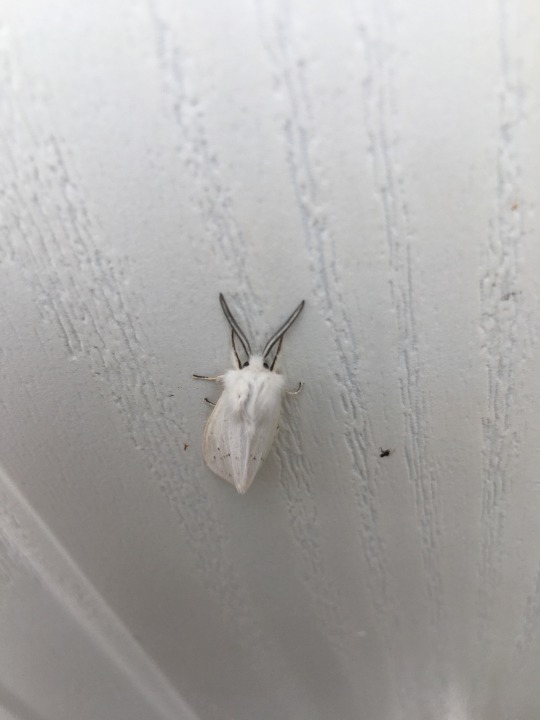
The Hickory Tussock moth caterpillar ( Lophocampa caryae) is also called the ‘Hickory Tiger Moth’ or ‘Hickory Halisidota
#nature#earths beauty#wood#tree bark#leaf#green#trees and forests#bluesky#sunshine#clouds#white moth#insects
1 note
·
View note
Text
wc prefixes and suffixes
prefixes: Acorn, Adder, Alder, Aloe, Amber, Ant, Apple, Ash, Ashen, Aspen, Auburn, Babble, Badger, Barley, Basil, Bat, Bay, Bear, Beaver, Beech, Bee, Beetle, Berry, Birch, Bird, Black, Blaze, Blizzard, Bloom, Blossom, Blue, Bluebell, Blueberry, Bone, Borage, Boulder, Bounce, Bracken, Bramble, Brave, Breeze, Briar, Bright, Brindle, Bristle, Broken, Brook, Brown, Brush, Bubble, Bumble, Burning, Burn, Buzzard, Buzz, Cave, Cedar, Cherry, Chestnut, Chirp, Chive, Cinder, Claw, Clay, Clear, Cliff, Cloud, Cloudy, Clove, Clover, Coal, Cold, Copper, Cotton, Creek, Cricket, Crooked, Crouch, Crow, Cypress, Daisy, Dandelion, Dapple, Dappled, Dark, Dawn, Dead, Deer, Dew, Doe, Dove, Downy, Drift, Drizzle, Duck, Dune, Dusk, Dust, Dusty, Eagle, Ebony, Echo, Eel, Elder, Elm, Ember, Elk, Falcon, Fallen, Falling, Fallow, Fawn, Feather, Fennel, Fern, Ferret, Finch, Fire, Fish, Flame, Flare, Flash, Fleet, Flint, Flood, Flower, Flurry, Fog, Forest, Fox, Freckle, Frog, Frost, Frozen, Gentle, Ginger, Golden, Goose, Gorge, Gorse, Grass, Green, Grey, Grizzled, Grouse, Gull, Gust, Hail, Half, Hare, Haven, Hawk, Hay, Hazel, Heather, Heavy, Hemlock, Heron, Hickory, Hill, Hive, Hollow, Holly, Honey, Hop, Hornet, Hound, Hush, Ice, Icy, Iris, Ivy, Jagged, Jay, Jump, Juniper, Kestrel, Kindle, Kink, Lake, Larch, Lark, Laurel, Lavender, Leaf, Leopard, Lichen, Light, Lightning, Lilac, Lily, Lion, Little, Lizard, Long, Lost, Loud, Lynx, Mallow, Maple, Marigold, Marsh, Meadow, Minnow, Mint, Missing, Mist, Mistle, Misty, Mole, Morning, Moss, Mossy, Moth, Mottle, Mottled, Mountain, Mouse, Mud, Muddy, Mumble, Myrtle, Needle, Nettle, Newt, Night, Nut, Oak, Oat, Ocean, Odd, Olive, One, Orchid, Osprey, Otter, Owl, Pale, Parsley, Patch, Peach, Pear, Pearl, Pebble, Perch, Petal, Pheasant, Pigeon, Pike, Pine, Pink, Plum, Pond, Pool, Poppy, Pounce, Prickle, Puddle, Quail, Quick, Quiet, Rabbit, Ragged, Raccoon, Rain, Rat, Raven, Red, Reed, Ripple, Rising, River, Robin, Rock, Root, Rose, Rowan, Rubble, Running, Rush, Russet, Rust, Rusty, Rye, Sage, Sand, Sandy, Sap, Scorch, Scratch, Sea, Sedge, Seed, Shade, Shadow, Sharp, Sheep, Shell, Shining, Shore, Short, Shred, Shrew, Shrub, Shy, Silent, Silk, Silver, Skip, Skunk, Sky, Slate, Sleet, Slush, Small, Smoke, Smudge, Snag, Snail, Snake, Snow, Soft, Song, Soot, Sorrel, Spark, Sparrow, Speckled, Speckle, Spider, Splash, Splinter, Spotted, Spring, Spruce, Squirrel, Stag, Starling, Stoat, Stone, Stork, Storm, Stream, Striped, Stumpy, Sun, Sunny, Swallow, Swan, Sweet, Swift, Tabby, Tall, Talon, Tangle, Tansy, Tawny, Thistle, Thorn, Thrush, Thunder, Thyme, Tiger, Timber, Tiny, Toad, Torrent, Torn, Tortoise, Trout, Tulip, Tumble, Turtle, Twig, Twilight, Valley, Velvet, Vine, Violet, Viper, Vole, Vulture, Wasp, Water, Wave, Weasel, Web, Weed, White, Wild, Willow, Wind, Wolf, Wren, Yarrow, Yellow, Yew
suffixes: adder, ant, apple, ash, aspen, babble, bark, beam, bee, belly, berry, bite, bird, blaze, bloom, blossom, blotch, bounce, bramble, briar, branch, breeze, briar, bright, brook, bud, burn, burr, bush, call, chaser, catcher, cherry, chive, cinder, claw, cloud, clover, cough, crawl, creek, crest, crow, cry, curl, current, daisy, dance, dapple, dawn, drop, dove, dusk, dust, ear, echo, eye, eyes, face, fall, fallow, fang, feather, fern, field, fire, flake, flame, flare, flash, flight, flood, flower, flurry, fox, foot, freckle, frond, frost, fur, gaze, gleam, grass, grove, gorse, hail, hare, hawk, haze, heart, heather, holly, hop, hush, ice, iris, ivy, jay, jaw, jump, leaf, kelp, kestrel, lake, larch, lark, lavender, leaf, leap, leg, lichen, light, lilac, lily, lion, lizard, lotus, mallow, marsh, mask, meadow, mint, mist, moss, moth, mouse, murmur, needle, nettle, nose, nut, oak, oat, olive, patch, path, pelt, perch, petal, pigeon, pool, pond, poppy, pounce, puddle, quail, quill, rain, rat, raven, rapid, reed, ridge, ripple, rise, river, root, rose, rubble, runner, rush, sage, sand, scar, screech, sedge, seed, shade, shadow, shell, shine, sight, skip, sky, slate, slip, smoke, snow, song, soot, sparrow, spark, speck, speckle, splash, spot, spots, spring, stalk, step, stem, sting, stone, storm, stream, streak, stride, strike, stripe, stone, sun, swipe, swoop, tail, talon, thicket, thistle, thorn, throat, thunder, trail, tooth, tuft, tumble, vine, vole, water, watcher, weed, whisker, willow, wind, wing, wish, whisper
38 notes
·
View notes
Note
Allow me to fulfil your ask addiction. Queen, Animus, Rainforest, Jade Mountain, Pantala, Poison Jungle, Scavenger, Aquatic and Dreamvisitor?
Thank you kindly. :P
Queen: Favorite tribe?
Aw shiz. I actually really like all of them.
I guess since I have been working with Nightwings the most I will have to go with them. Although Silkwings are also my babies.
Animus: Do you have any Wings of Fire OCs?
Well I kind of consider the Darksight kids mine at this point but technically they are mentioned in canon so maybe that doesn't count. (Shameless self-promotion but if anyone hasn't seen it yet you can read more about them on my side blog @the-darksight-kids )
But besides them I do have a couple. I will keep it short but sweet.
Drift: The Icewing boyfriend of Fierceclaws. He's a real cutie but I haven't properly made any posts on him yet. I really love him though.
Hickory: (named after the hickory tiger moth. Honestly a little shaky on that name still but it's growing on me.) She's a Beetlewing from the time of Clearsight in Pantala. She's actually not too pleased with the changes that Clearsight is trying to make around those parts. (She was birthed from the idea of not everybody being excited about worshipping a new dragon who came out of nowhere.) I've actually mentioned her once before when I talked about an OC of mine with extreme opinions that gets a little controversial. Haven't looked at her in a while sadly.
:(
These are older but I still love them.
Dreamseeker: A Nightwing born a couple of hundred years after canon. She's a pretty famous bard who travels all over Pyrrhia. Honestly I just loved the idea of a dragon bard. I actually have some decent concept art of her somewhere....
River: Born a Princess to the Rainwings, River was never happy in her- his scales. Luckily for him he met a certain Nightwing bard and started traveling with her. They fall in love and it's adorable....
Okay if you didn't get what I was saying River is trans. Honestly it didn't start out that way but as I wrote the character he kind of took a life of his own. Man I need to come back to these guys. They're adorable!
For this one there's a whole cast so I'm not going to go into it.
But yeah. Those are my bigger OCs.
Rainforest: Favorite villain?
Darkstalker. Surprise, surprise.
I love my angsty boy sooo much. He's just sooo good!
Jade Mountain: Which character is the most like you?
Probably Blue. At least on a base level. I immediately felt for the whole getting into someone elses head and think about what they must be feeling.
I'd get in trouble for this after losing a game of basketball, for feeling happy for the other team for winning. But I have a sarcastic edge now so I guess I am Blue with a pinch of Glory. LOL
Pantala: Third times the charm. Haha. I would be a Silkwing and my name would be Swallowtail. I'd have the coloring of an old world swallowtail butterfly.
For additional flavor I will tell you my WIP backstory. I would hopefully live in Jewel hive and make Jewelry for a living. (I actually make jewelry in real life so this would be what I would like to do here.)
Poison Jungle: Top 3 OTPs? Top 3 Notps?
I know I've already answered this one so I will do the next three in each. Haha
Otps
4: Morrowmind (read my au you'll get it.)
5: Blicket (Adorable!)
6: Thoughtout (Yas!)
Notps
4: anything with Moon. TBH. Just... I really am not a fan.
5: Most of Glorys other ships tbh. I just... No. No. I just can't get behind them I'm sorry.
6: Morrowseer/Blister 😐
Scavenger: Your favorite Head canons?
Ooof. There's so many. I'll give you three.
Baby Mudwings follow their Bigwings around like ducklings.... Just... Aw!
The Nightwing dragonets finding constellations with their wings. Also aw!
Buff females with slender pretty males. Give it to me!!!
Aquatic: Favorite Friendship?
I feel like the dragonets of destiny would be cheating. So Imma gonna have to go with Peril and Turtle. It's so pure.
Dreamvisitor: Which character would you be best friends with?
Cricket. We could talk about books and random facts together! I'm seriously the girl who has a random fact for any and every occasions. I'd be embarrassed but I'm not!
(I wish school had been more fun. Since I do enjoy learning. But I don't like having to cram worthless junk in my brain for a one time test.)
9 notes
·
View notes
Text
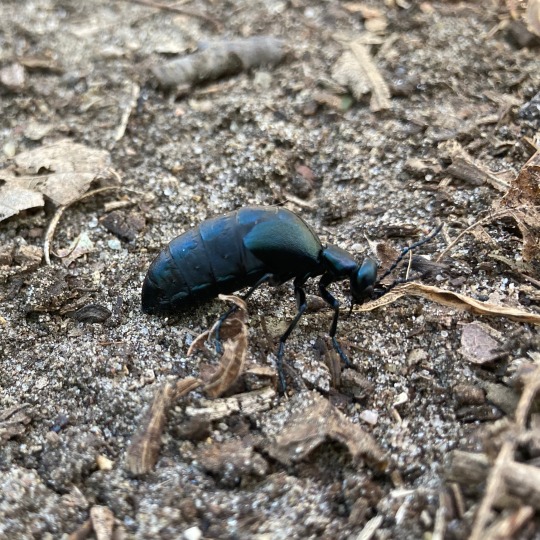

@fleetingfutures submitted: A chunky friend who I found while walking a trail in Michigan a few weeks back! Apparently it’s a type of oil beetle, and they can excrete a blood-like fluid that causes blistering if they’re disturbed.
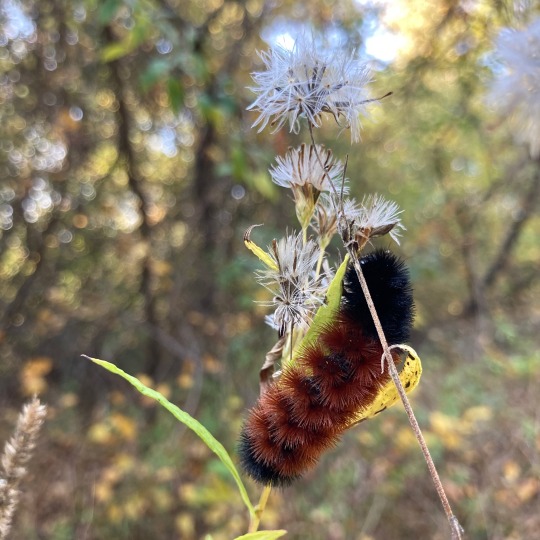

I also saw some nice and fuzzy tiger moth and tussock moth caterpillars in the same place: it was a definitely a good day for bugs!
Yess!!! Oil beetles are a type of blister beetle, which are called that because as you mentioned, they excrete their own hemolymph (bug blood) from their joints when disturbed. Their hemolymph contains a chemical called cantharidin which causes blistering when it comes in contact with skin. Your friend above is in the genus Meloe, and the ones I’ve seen in that genus have a sort of orangey-colored hemolymph. Here’s a pic where you can see it:
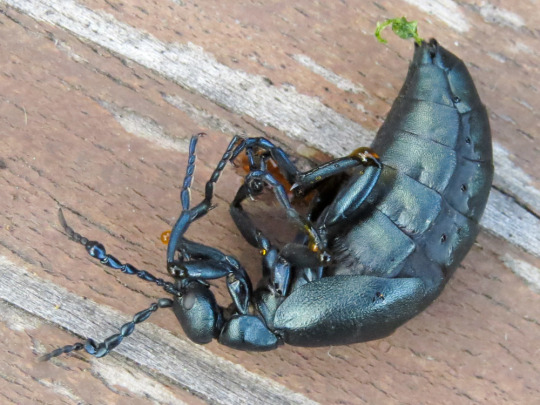
RIP to this buttercup oil beetle :( Photo by schoenitz
Anyway dudes like this are why I don’t recommend handling bugs with your bare skin unless you know what they are. And, as it happens, the hickory tussock caterpillar in the fourth photo is another pal who can cause skin irritation if handled!
The woollybear in the third photo is perfectly safe to handle, though :) Thanks for sharing your bug friends!!
#animals#bugs#insects#submission#beetle#blister beetle#oil beetle#buttercup oil beetle#caterpillar#moth#larva#woollybear#isabella tiger moth#tiger moth#hickory tussock moth#hickory tussock#tussock moth caterpillar#dead bugs
114 notes
·
View notes
Text
all the prefixes
so like the suffix list, here are all the canon prefixes. just all of them. do with this what you will. feel free to tell me if i missed one
not included: founder names (thunder-, river-, etc), tribe or settler names (unless also present in a current clan cat), kittypet/loner/single names (millie, bone, egg, etc), skyclan names that are clearly derived from a kittypet name (billy-, bella-, harry-, etc).
A
acorn-
adder-
alder-
amber-
ant-
apple-
arch-
ash-
aspen-
B
badger-
bark-
beech-
bee-
beetle-
berry-
birch-
bird-
black-
blaze-
blizzard-
bloom-
blossom-
bounce-
blue-
bluebell-
boulder-
bracken-
bramble-
breeze-
briar-
bright-
brindle-
bristle-
broken-
brown-
bubbling-
bumble-
buzzard-
C
cedar-
cherry-
chive-
cinder-
cinnamon-
claw-
cloud-
clover-
cone-
copper-
creek-
crooked-
crouch-
crow-
curl-
curly-
cypress-
D
daisy-
dandelion-
dangling-
dapple-
dark-
dawn-
dead-
deer-
dew-
doe-
dove-
dusk-
dust-
E
eagle-
ebony-
echo-
eel-
ember-
F
fallen-
fallow-
feather-
fennel-
fern-
ferret-
fidget-
finch-
fin-
fire-
flail-
flame-
flash-
flax-
fleet-
flint-
flip-
flower-
fly-
fox-
freckle-
fringe-
frog-
frond-
frost-
furze-
fuzzy-
G
golden-
goose-
gorse-
grass-
gravel-
gray-
green-
gull-
H
hail-
half-
hare-
hatch-
haven-
hawk-
hay-
hazel-
heather-
heavy-
heron-
hickory-
holly-
hollow-
honey-
hop-
hoot-
hound-
I
ice-
ivy-
J
jay-
juniper-
jagged-
K
kestrel-
kink-
L
lake-
larch-
lark-
leaf-
leopard-
lichen-
light-
lightning-
lily-
lion-
little-
lizard-
log-
long-
loud-
low-
M
mallow-
maple-
marigold-
marsh-
meadow-
midge-
milk-
minnow-
mint-
mist-
misty-
mistle-
mole-
moon-
morning-
moss-
mossy-
moth-
mottle-
mouse-
mud-
mumble-
N
nectar-
needle-
nettle-
newt-
night-
nut-
O
oak-
oat-
olive-
one-
otter-
owl-
P
pale-
parsley-
patch-
pear-
pebble-
perch-
petal-
pigeon-
pike-
pine-
pink-
plum-
pod-
poppy-
pool-
pounce-
prickle-
primrose-
puddle-
Q
quail-
quick-
R
rabbit-
ragged-
rain-
rat-
raven-
red-
reed-
ripple-
robin-
rock-
rook-
rose-
rowan-
rubble-
running-
rush-
russet-
rye-
S
sage-
sand-
sandy-
scorch-
sedge-
seed-
shade-
sharp-
shattered-
sheep-
shell-
shimmer-
shivering-
shred-
shrew-
shy-
silver-
sky-
slate-
sleek-
slight-
sloe-
small-
smoke-
snake-
snail-
snap-
sneeze-
snip-
snow-
soft-
song-
soot-
sorrel-
spark-
sparrow-
speckle-
spider-
spike-
spire-
splash-
spot-
spotted-
squirrel-
stag-
star-
starling-
stem-
stoat-
stone-
storm-
strike-
stumpy-
sun-
sunny-
swallow-
sweet-
swift-
T
tall-
talon-
tangle-
tansy-
tawny-
tiger-
thistle-
thorn-
thrift-
thrush-
timber-
toad-
torn-
trout-
tumble-
twig-
V
vine-
violet-
vixen-
vole-
W
wasp-
wave-
weasel-
web-
weed-
wet-
whisker-
white-
whorl-
wild-
willow-
wish-
wolf-
woolly-
wren-
Y
yarrow-
yellow-
yew-
#long post cw#warrior cats#reference#idk how to else to tag it#have fun#did you know apparently only skyclan knows what quails are. amazing right#the things you learn doing this shit
194 notes
·
View notes
Text
Kids and Caterpillars: Fostering a Child’s Interest in Nature by Rearing Lepidoptera (Moth and Butterfly) Larvae
by James W. Fetzner Jr.
We hear a soft THUMP! as another large bug hits the sheet after being drawn in to the bright mercury vapor light on this moonless night in the mountains of Montana. Upon hearing that sound, our usual questions arise … “What was that?” or “Humm…Who are you?” My 9-year-old son and I try to determine if the new arrival to the sheet is a species that is new, or one that we have already seen this evening. In this case, we note that it appears to be a new brownish moth with slivery patches on its wings, a species that is new to us and a good choice for one of our attempted rearings. We scramble to capture it in one of our empty “live jars” before it flies away, in the hopes of eventually getting some eggs.

Female of Autographa pseudogamma (Grote, 1875) from Montana.
One of the easiest ways to encounter and collect insects from the wild is to erect a “bug sheet” at night and attract them en masse to your location, rather than expending a lot of effort trying to catch them individually by hand. As a scientist working in the vast insect collection at the Carnegie Museum of Natural History (CMNH), I often find myself bringing a bug sheet with me when I travel, especially when visiting family in other parts of the country. Not only does this help add specimens to our ever-expanding insect research collection, but it also serves as a fun way to experience the diversity of insects from different regions of our country. It is also an activity that kids really enjoy and engage with, and they always seem to have a great time catching interesting and colorful bugs. Even those that say they don’t like bugs seem to get caught up in the excitement when a large beetle or moth lands on the sheet.

Insect collecting sheet. A, the “bug sheet” setup. B, Collecting moths at the bug sheet.
After a few hours of collecting cool bugs at the sheet the night before, my son and I wake up in the morning and check our assortment of live jars with an air of anticipation. Nothing in that one, or in that one. But wait, look at the bottom of that jar. See those little pale-yellow dots all over? Those are what we were hoping for…EGGS!! Our female moth laid a bunch of eggs! So, now the fun begins.

An example of pale-yellow eggs laid in the bottom of a “live jar.” Source was a female Pyrrharctia Isabella (J.E. Smith, 1797), also known as the Isabella tiger moth or banded woolly bear.
A little research in our trusty moth field guide and we determined that our bug was a species known as Autographa pseudogamma (Grote, 1875), the Delicate Silver Y moth. We also discovered that the caterpillar and host plant for this moth were unknown, (i.e., have never been described or characterized in the scientific literature). We realize that this is a great opportunity, not only to have fun rearing some caterpillars of a new species of moth that we have not encountered before, but we could also contribute to the scientific knowledge about this species by publishing a scientific paper describing the caterpillar and other aspects of its life history. A big win-win all around.
After finding out more information about this species and its close relatives, we started preparing for the eggs to hatch, which only took about seven days from the time they were laid. Once that happened, we transferred the very tiny, newly hatched caterpillars out of the live jar and into a larger plastic container with dandelion leaves from our front yard as food. They started eating and growing and my son watched them closely as they progressed through their various growth stages (instars). He had great fun watching and laughing as the 50 or so caterpillars tried to escape in all directions from the container onto our kitchen table (boy, they moved fast!) as we cleaned it out and added new food for them each day.

Image showing a typical caterpillar iso-female culture in a plastic “rearing chamber” (note: the lid has been removed so the contents can be seen). The photo shows an unrelated culture of Automeris randa Druce, 1894 from Arizona.
Rearing caterpillars is a lot like raising frog tadpoles. The caterpillars can be quite active, and they are constantly changing, with some species changing colors after they molt, others become hairier, and they all increase in size every time they molt to a new instar (the developmental stage in arthropods that occurs between molts). Just watching them eat or observing some of their other odd behaviors can be quite fascinating. The caterpillars we reared were voracious eaters, eventually going through several pounds of dandelion leaves in a single day!
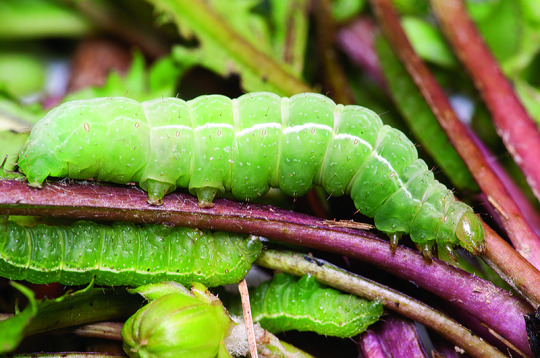
The previously unknown last instar caterpillar (larva) of Autographa pseudogamma.
Many children show a keen interest in caterpillars when they are encountered outdoors. Caterpillars are often seen as cute and fuzzy, which often leads to children touching them and/or picking them up. However, you should be cautious of this because some caterpillars, like the conspicuous and commonly encountered Hickory Tussock Moth (Lophocampa caryae Harris, 1841) caterpillar, can sometimes cause severe skin rashes, or even blindness if you get their hairs into your eyes. Several field guides to caterpillars are available, but they are not all-inclusive. This is because there are many moth species where the caterpillars are not known (as in our case), or where caterpillars have been found, but it is not known which adults they came from.
After reaching the final instar, the caterpillars move on to the next stage of their life cycle before they become adults, the pupa. During this stage, they metamorphose from a worm-like larva into a winged adult, and for A. pseudogamma, this process only took 11 days.
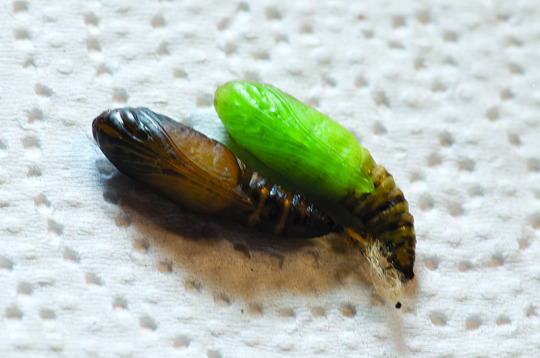
Pupae of Autographa pseudogamma. Newly formed pupa (right) that is < one day old (green) along with an older pupa (left) that is > two days old (brown).
We were able to witness the entire life cycle of A. pseudogamma, from an adult to an egg to a larva to a pupa and then back to an adult again, all within the span of a single month. This was a great learning experience for my son. He was able to intimately witness first-hand the process by which insects grow and develop, which is something that few people get to see. He was also able to participate directly in the various stages of scientific discovery and, perhaps more importantly, he was able to see how a scientist would record observations and how those data are converted directly into a scientific publication. If you are interested, our study on A. pseudogamma was recently published in the Annals of Carnegie Museum. While not every caterpillar rearing will result in a published study, they are great learning experiences for young children that have an interest in nature. Studies of caterpillars like this would also make great school science fair projects. For information on getting started, see this article on how to rear caterpillars.
The huge diversity of insects, with all their different colors, sizes, and shapes, still evokes a child-like awe in me for the natural world and this is something that I hope to pass down to my son, as well as other children that might visit the insect collection here at the natural history museum (all those budding entomologists). Remember, even something that may seem silly and inconsequential, like raising a few caterpillars at home with your child(ren), can turn into something that fosters a deeper interest in the natural world, and if you’re lucky, may even end up contributing significantly to science.
James W. Fetzner Jr., Ph.D., is assistant curator in the Section of Invertebrate Zoology at Carnegie Museum of Natural History. Museum employees are encouraged to blog about their unique experiences and knowledge gained from working at the museum.
#carnegie museum of natural history#bugs#larvae#lepidoptera#life cycle#pupae#caterpillars#entomology#insect collection
55 notes
·
View notes